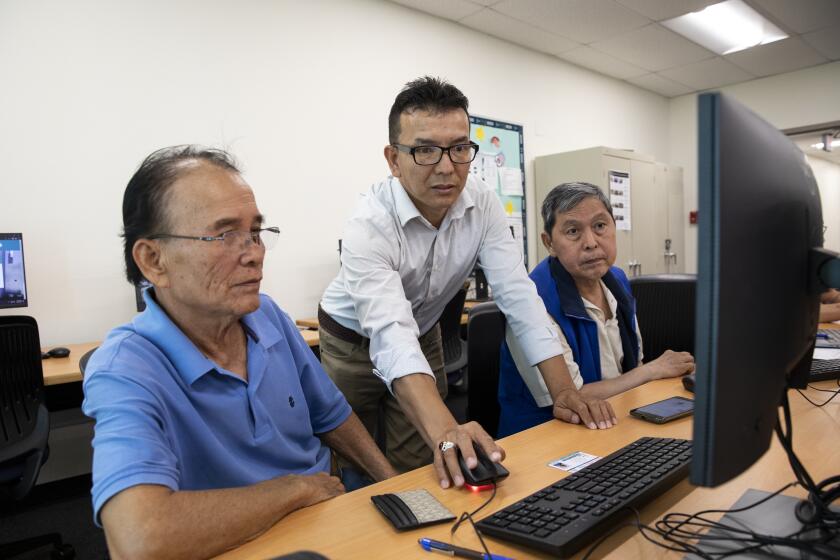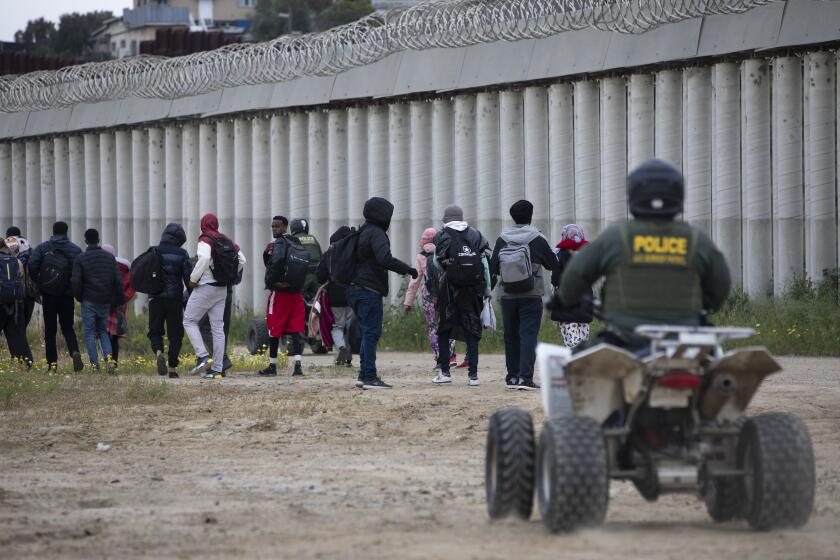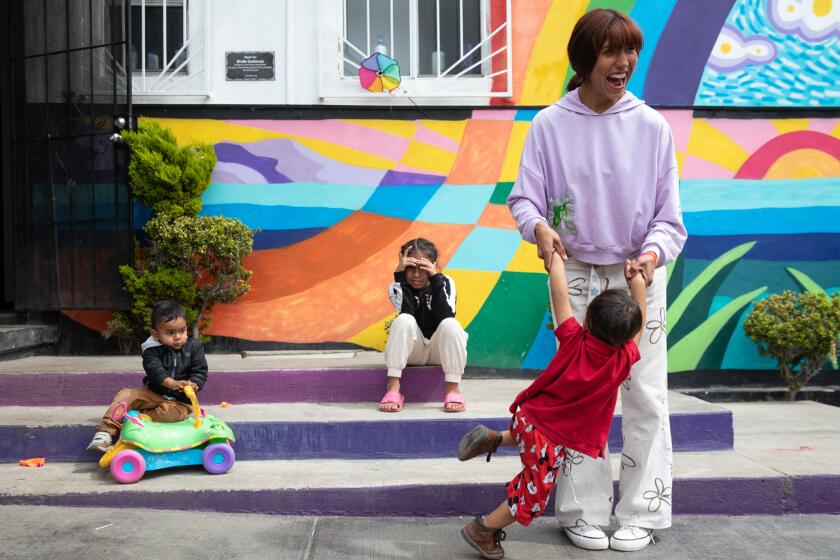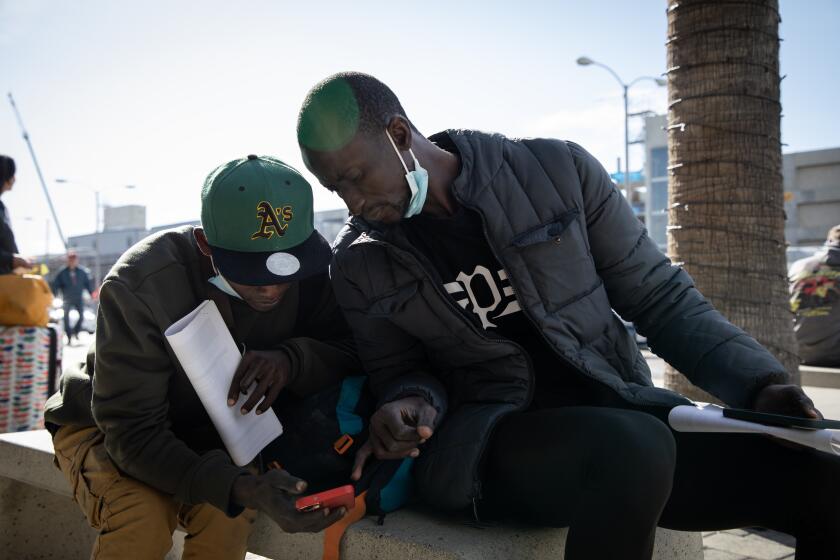Almost all asylum-seeking families show up for court, report finds
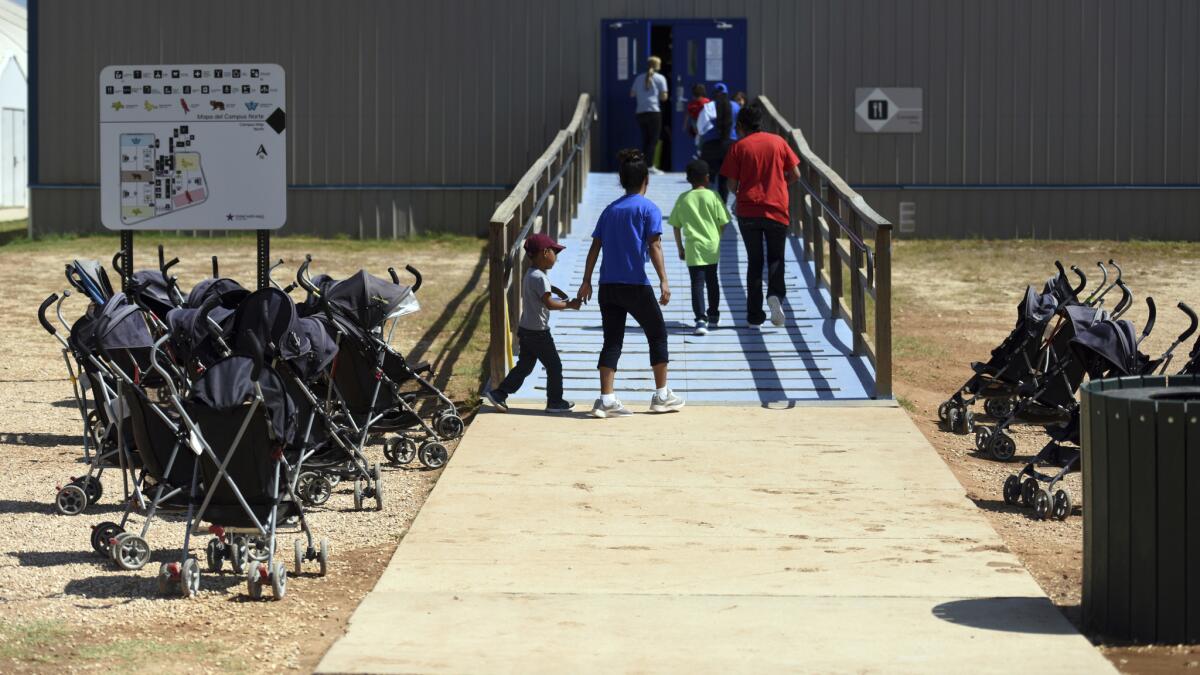
With policies on migrant families under increased public scrutiny following the Trump administration’s rote separation of children from their parents, advocates are pushing back on proposals to increase family detention.
A new study released Thursday by the American Immigration Council, a nonprofit that promotes immigration, found that asylum-seeking families who have been released from detention almost always show up for court.
The study’s findings differ from those released annually by the Executive Office for Immigration Review, the government agency responsible for immigration court, which reports lower compliance rates.
The study uses a broader view of the system and a longer time period to calculate its statistics.
Historically, when families arrived at the border — many hoping for asylum — they would go to family detention centers for the first steps of processing their claims if the facilities had enough beds to hold them. Otherwise, officials would give them information for immigration court appointments and release them into the U.S.
Once the families in detention completed preliminary steps in the asylum process, including passing an interview that determined whether their fear was credible, they would also generally be released. A court settlement limits how long migrant children may be held in custody to about 20 days.
Looking at 15 years of immigration court data, researchers from the American Immigration Council found that 96 percent of families requesting asylum who passed through detention facilities showed up for their immigration court hearings. Close to 6,000 families were released from detention to pursue asylum claims between 2001 and 2016, according to the report.
People seeking asylum may have more incentive to appear in court than groups who don’t have legal options for asking to stay.
Several hundred other migrant families who did not apply for asylum were released from detention between 2001 and 2016. When the report included them, the rate of migrant families showing up for court hearings decreased to 86 percent.
That trend continued for individuals released from adult detention facilities who had asylum cases pending over the same time period. According to the study, 95 percent of those asylum seekers also showed up for all of their hearings, and 81 percent of all those released from adult detention came to court.
The American Immigration Council compliance rates are higher than those published annually by EOIR because the Council data includes people whose cases are still pending and who have shown up for all of their hearings so far. The EOIR, on the other hand, uses cases completed that year to calculate its statistics and does not look at compliance rates for those whose cases are still pending.
Because of the current court backlog of over 700,000 cases, Council researcher Ingrid Eagley, a professor at UC Los Angeles, said she felt it was important to include those still pending.
EOIR measures instead who comes to court based on in absentia rulings — or decisions that judges make to deport someone if that person doesn’t show up to court. That number has fluctuated over the time period in question.
According to EOIR data, the percentage of people released from detention who didn’t show up in court and were then ordered deported peaked in 2002 at 49 percent. In 2010, it reached a low of 21 percent. That would mean that the percentage of people who showed up in court ranged from 51 percent to 79 percent between 2001 and 2016.
The EOIR annual reports do not give detailed analysis for the rates at which asylum seekers or families specifically show up in court.
EOIR also does not include cases that were resolved in a way other than a judge’s decision, called “other completions” in EOIR’s report. Cases that are “administratively closed,” which allows immigrants to stay in the U.S. without judges deciding on the merits of their cases, are part of that group.
According to EOIR reports, “other completions” went from 8 percent to more than a quarter of case outcomes between 2012 and 2016.
A Senate subcommittee this week looked at in absentia rulings for cases involving yet another subset of migrants: children who arrived at the border alone. The investigation found that government officials had lost track of unaccompanied migrant children released to sponsors.
The Permanent Subcommittee on Investigations reported that 41 percent of unaccompanied children were ordered deported in 2016 because they did not show up to court, and 48 percent skipped court in 2017.
Children go through a different process from single adults or families who arrive at the border. Instead of going to ICE custody, they go through the Department of Health and Human Services before they’re released to sponsors who may or may not be authorized to be in the U.S.
It’s up to sponsors to get the children to hearings, the report said. Four government agencies involved in immigration policy told senators at a hearing Thursday that they were not responsible for following up with sponsors.
Attorneys who represent children in court told the subcommittee that some are unable to make it because they live far from the courts, or their sponsors don’t know they have to tell the court when they change addresses. The report said other sponsors placed children in dangerous situations, including eight children who were placed into a labor-trafficking ring.
A child’s sponsor also might have less incentive to show up in court than a family pursuing asylum.
With three current family detention centers — one in Pennsylvania and two in Texas — Immigration and Customs Enforcement can hold more than 3,000 family members in custody.
On Thursday, the three facilities held 2,211 family members, according to ICE.
Some of the families now in detention were previously separated by border officials and reunited under judicial order from a class-action lawsuit launched in San Diego earlier this year. It’s not clear why the government chose to detain certain reunited families and release others. Many of the parents in detention have already been ordered deported.
Shalyn Fluharty, managing attorney at the Dilley Pro Bono Project, said that it’s disheartening to see children locked up at the South Texas facility.
She described confusion she hears from families who watched others get released at the border while they were sent to detention. The government’s decisions about whom to lock up seem arbitrary, she said.
The American Immigration Council used its report’s findings to sharply rebuke the Trump administration’s proposals to expand the number of beds for family detention and to hold families for longer. The report pointed to effects of detention on both the physical well-being of children involved and migrants’ abilities to find attorneys and win their cases as reasons that the U.S. government should pursue alternatives for asylum-seeking families.
Released families often have regular check-ins with immigration officials, and many wear ankle monitors that track their locations. These are part of several alternatives-to-detention programs run by ICE or its contractors.
When asked about the report, a Department of Homeland Security official said that “while ATD is effective in terms of ensuring that enrolled aliens appear for scheduled court hearings, it has not been effective in ensuring removal of those ordered removed.”
“The most important factor that determines if an alien will actually be removed when a final order is issued is whether the person is in detention when this occurs,” the official said. “If an alien is not detained at the time, in many cases ICE will have to expend significant resources to locate, detain, and subsequently remove the alien in accordance with the final order.”
The official said just over 1 percent, or 2,430 of the 226,119 people removed from the U.S. in fiscal 2017, were enrolled in alternative-to-detention programs. The official did not say how many people enrolled in alternatives-to-detention programs were ordered removed that year.
ATD programs received $183 million in fiscal 2017, the official said, adding that such programs aren’t cost-effective because that meant $75,360 per person removed. The official did not respond to questions about how much of the funding was spent on people who were not ordered deported.
Whether the people in question are part of families or individual cases, ICE is only allowed to keep people in custody if the agency believes they are a flight risk and won’t show up in court or if it believes they are a danger to the community.
According to the official, DHS pays on average $137.19 per person per day for those held in detention. It pays $5.50 per person per day for those in ATD programs.
Michelle Brané of the Women’s Refugee Commission said that DHS should also take into account people who win their cases and are allowed to stay, as well as people whose cases last for more than a year and are still waiting for their court dates.
She said her organization heard similar pushback from officials under the Obama administration but to a lesser degree.
During the Obama administration, DHS began an alternatives program specifically for families that used case managers to follow them through the process and connect them with attorneys.
According to a government oversight report about the program, ICE reported 100 percent attendance at court hearings for the 800 families enrolled and 99 percent compliance with agency check-ins.
Brané said two of the families realized after talking with their attorneys that they didn’t have strong cases and voluntarily went home. The program lasted about 18 months until the Trump administration shut it down in 2017.
Immigration Videos


When children are separated from their parents at the border, here is where they go next

Prospects of a deal for 'Dreamers' may hinge on separating Trump from hard-liners on his staff

What is DACA?

Border wall prototype contractors selected

Video: Ukrainian boxer wins asylum in U.S.

30 apprehended after Border Patrol agents discover tunnel

Video: Kurdish diaspora prepare to vote on independence
Follow me on Facebook for live updates about immigration news
kate.morrissey@sduniontribune.com, @bgirledukate on Twitter
Get Essential San Diego, weekday mornings
Get top headlines from the Union-Tribune in your inbox weekday mornings, including top news, local, sports, business, entertainment and opinion.
You may occasionally receive promotional content from the San Diego Union-Tribune.

